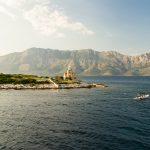Traditional food, historical sites, and the Dalmatian ‘fjaka’ mentality and culture are, according to foreign tour operators, the most important things that bring tourists to Dalmatia, reports Splitski Dnevnik on March 13, 2019.
While the Ministry of Tourism considers increasing the quota of workers from the Philippines this year and restaurants serve modern dishes, finger food, and pizza, visitors actually want to experience the authentic Dalmatian konoba, ‘fjaka’, and the colors, smells and tastes of the Adriatic.
“Croatia is an absolutely beautiful country, the people and food are wonderful, it’s hard to say that you are better than Italy, but you are very close. In Croatia, there are many beautiful sites, and most of our clients appreciate the authenticity of both nature and culture. This is exactly what you need to preserve for the future and keep an eye on not bringing too many guests, but rather concentrate on better quality guests and those with higher spending power,” said Anna Rostron, a representative of an Italian tour operator, who, together with her colleagues from 12 countries, discussed how to attract new guests to Dalmatia with higher spending power at an international conference and business workshop in Split.
Along with representatives of the tourism sector, more than 40 tour operators and representatives of agencies from the United States, Great Britain, France, Italy, Hungary, Sweden, Poland, Germany, Spain, Russia, and Croatia participated.
“Ireland is very similar to Dalmatia, especially in understanding what customers want. You have a lot of potentials, the Irish people here feel at home,” said Sheni Renan, a representative of a tour operator from Ireland, and admits that the only unpleasant surprise in Split was the bura.
The dispersion of tourism before and after the season is the primary job of the Ministry of Tourism in the next period, and a way to make this happen is in the development of health tourism.
“There is no concern for Croatian tourism while we are working on quality and are trying to develop specific forms of tourism which are our sole guarantor for development before and after the season. Research has shown that the sun and sea are still the main reason for tourist arrivals to our destination, but some other motives are certainly appearing to attract tourists with higher spending power,” says Monika Udovičić, Assistant Minister of Tourism, adding that the Strategy for Tourism Development defines specific forms of tourism which would be more competitive than others.
“There are more of them, and the main focus will be on the development of congress tourism, which does not depend on the sun or the sea, and there is also health tourism. The Ministry has agreed to amend the two laws to develop this kind of tourism in Croatia. They allow health facilities to provide health tourism services. We must mention that active holidays are very popular. Split-Dalmatia County has all this and has great potential. It is necessary to work on improving accommodation capacities, but I think we are heading in the right direction.”
And guests with higher spending power generally expect several-day arrangements that are generally booked before arriving at the destination.
“The Holy Scripture of all tourism is the motive of arrivals, and if the heart of the season is excluded, where the main motive is the sun and the sea, we must do our best to attract these kinds of guests. We can do this through the better organization of offers and better quality events in destinations, and along with that, effort, engagement and promotion in the pre and postseason so that the destinations live throughout the year,” says Boris Žgomba, President of the European Association of Travel Agencies and Tour Operators.
Cycling tourism, adrenaline, ethno-gastronomic tourism, and cultural tourism are all offers that will bring guests away from the heart of the season. It’s not enough, says Žgomba, but we have to start somewhere.
“Guests of higher spending power or better quality will come only if we have a quality offer. The offer in March and April must be that active and proactive vacation; there must be something that will attract them because the hotels and the destination are not enough. The accommodation we offer satisfies this kind of guest, it is quality and fine, but we need to concentrate on this bigger part of the job that is going on outside the hotel. They mostly search for programs that are directly related to the guest and created specifically for them, not typified, as we had for years in mass tourism programs. Whether it’s gastronomic or cultural tourism, archeology, we have all these potentials. We are too often shy about it because we think that this will not be interesting to anyone, but guests are looking for exactly that.”
To read more about travel in Croatia, follow TCN’s dedicated page.









